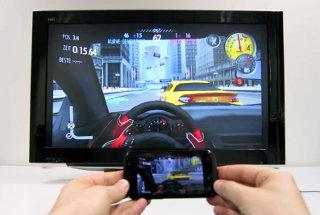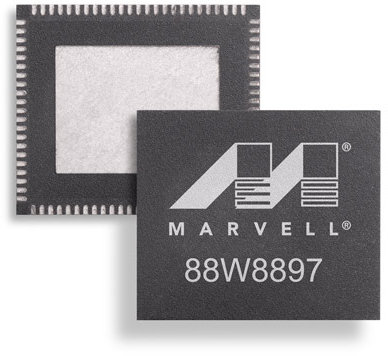E.S.R.Labs is a German embedded software company mainly working for the automotive industry. But this time, they’ve started to work for the consumer market with Android Transformer, a software solution that can mirror an Android display to another Android device display via Wi-Fi in a similar fashion to what WiFi Miracast will do. Eventually, the company plan to make Android Transporter compatible with Wi-Fi Miracast, but in the meantime they rolled out their own solution by taking advantage of H.264 hardware encoders and decoders on Galaxy Nexus S and the Raspberry Pi. If they use standard APIs, I assume any hardware running Android that with H.264 hardware encode/decode should support their platform. I hope it will be work on (or be ported to) CX-01 mini PC which can be bought as low as $40 inc. shipping. It would make an even cheaper hardware than the Raspberry Pi (Up to 33% […]
Texas Instruments Wi-Fi Miracast Wireless Display on OMAP 4470
A few days ago, Texas Instruments announced a Wi-Fi CERTIFIED Miracast Video Streaming Solution based on OMAP4470 and WiLink 7.0, and they said in their press release that they would demo the platform at Computex 2012. Charbax is currently there, and shot a video showcasing different use cases possible with Miracast such as multi-tasking while streaming and mirroring. This technology looks very promising, especially since existing devices based on OMAP4470 will be able to support it with just a software update. You’ll also need to have a Miracast compliant TV, but eventually you should be able to buy a Miracast HDMI dongle for your TV (instead of buying a new TV), which is basically the board used in the demo except they use cables. This technology could be a threat to the MHL standard. The only advantage of the latter is that you don’t need power supply as it will […]
Texas Instruments Unveils Wi-Fi CERTIFIED Miracast Video Streaming Solution Based on OMAP 4
In my previous post, I wrote about Marvell announcement of its new 802.11ac chipset (Avastar 88W8897) that will be Wi-Fi CERTIFIED Miracast. But it’s not the only company for such solution, as Texas Instruments has also announced the availability of a complete solution for mobile devices designed to support Wi-Fi CERTIFIED Miracast, based on the Wi-Fi Alliance Wi-Fi Display Specification that enables users to reliably display high definition content from a mobile device onto a larger screen over a secure, low-latency, wireless network connection. The Miracast certification program defines a standards-based solution for streaming video and audio content over a peer-to-peer Wi-Fi Direct wireless network. TI solutions will leverage OMAP processors and its WiLink connectivity solutions to provide a Miracast platform. This new solution will be available later this year to power mobile phones, tablets, HDTVs, projectors and audio receivers. Texas Instruments solution will provide the hardware and software resources […]
Marvell Avastar 88W8897: Wifi 802.11ac, NFC and Bluetooth 4.0 Chip
Marvell has announced the Avastar 88W8897, a low-power radio chip supporting 802.11ac, near field communication (NFC) and Bluetooth 4.0, aimed at mobile and HD multimedia devices such as ultrabooks, tablets, gaming consoles and smart TVs. Marvell claims the 88W8897 SoC enables a rest of bill of materials (RBOM) footprint reduction of 40-to-50 percent and cost reduction of 75 percent compared to previous wireless solutions. Key features of Marvell Avastar 88W8897 chip include: Wi-Fi 802.11ac – This standard increases bandwidth available over the Wi-Fi link (theoretically up to 1 Gb/s) with throughput up to 867 Mbps for the 88W8897. This kind of throughput allows reliable high-definition (HD) video streaming, tunneled direct link setup (TDLS) and high-speed wireless backup and sync for mobile devices. NFC – NFC allows consumers to pay for items with the tap of a phone via mobile commerce and point-of-sale (e-wallet) applications. It can also enable one-tap pairing […]




